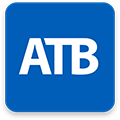The importance of business owners having cash on hand cannot be overstated. Even if profitable, businesses can easily go bankrupt because they run out of cash.
When you understand financial statements, you get an accurate snapshot of your business' finances and can better prepare for conversations with lenders.
Understanding cash flow
Cash management involves how your company manages its operations, financing and investments. Do you have enough cash available to pay suppliers, wages and loans? How much money is tied up in investments or inventories? It’s important to strike a balance between having too much cash on hand and not enough.
Interested in a deeper dive into cash flow? The ATB Entrepreneur Centre has you covered with an introductory lesson.
Financial statements
When lenders evaluate your business, they might request:
- recent personal tax statements (like T1 General and Notice of Assessment): to confirm income and payment of personal taxes.
- personal financial statements: to provide insight into your personal net worth.
- personal credit bureau report: to demonstrate how you manage personal debt.
- year-end compilation engagement financial statements: to show your company’s financial performance during a specific period, usually featuring an income statement and balance sheet prepared by an accountant.
- incorporation documents: to show if your business is registered and headquartered in Alberta, and has a legal entity active status and up-to-date annual filings.
- your business plan and cash flow projections: to be requested if you are a newer business, depending on how much money you want to borrow. Your business plan is a blueprint outlining your products and services, market and SWOT analysis, marketing strategy and management structure.
These documents provide lenders with a glimpse into how you operate finances. In some cases, if your business’ net worth is low but personal net worth is high, it can show lenders that you’re financially responsible and strengthen the deal. Your personal and business finances are closely linked.
Need-to-know financial ratios
Based on your balance sheet and income statement, these financial ratios are important to understand:
1) Working Capital Ratio (also known as Current Ratio): measures your company’s short-term financial health or liquidity—the ability to meet payment deadlines. (Note: In the financial industry, the term “current” means one year or less).
Working capital ($) = current assets - current liabilities
Your working capital is the money needed for your business’ short-term operations—how much money do you have at your disposal? It depends on your industry and circumstances. You might have short or long production cycles. Maybe you have 10 or 100 customers in a day.
Working capital ratio (%) = current assets / current liabilities
The working capital ratio compares your company’s current assets (financial benefits your business will receive in the next year, like cash flow, short-term investments, accounts receivable and inventory) to its liabilities (debts you owe in the current fiscal year, like line of credit, accounts payable, staff wages and expenses).
The higher this ratio, the more your business has the ability to cover its short-term liabilities with its short-term assets. ATB recommends aiming for a ratio of 1.25:1 to operate comfortably. This means your company should have access to $1.25 of current assets to cover every $1 of current liabilities. If the ratio is lower than 1:1, it means you have more debt (current liabilities) than resources (current assets).
2) Debt to Equity Ratio: measures how much debt you have compared to assets or equity (owner-contributed funds). How are you financing business operations?
This ratio assesses your company’s financial risk to lenders, investors, shareholders, potential buyers and yourself, the owner. ATB recommends a debt-to-equity ratio of less than 3:1, meaning your company can finance up to $3 of debt as long as there is $1 of equity.
A higher ratio means your company heavily relies on borrowed money, indicating an increased risk of bankruptcy because you might have higher interest expenses and debts. A lower ratio (meaning you have more equity than debt) indicates your company relies more on your investments, carries lower financial risk and is in a stronger financial position with less debt and lower interest expenses.
3) Debt Service Coverage Ratio: measures a business’ available cash flow to repay loans, get new financing and pay dividends.
This ratio shows how much earnings before interest, taxes, depreciation and amortization a company generates for every dollar of interest and principal paid.
ATB recommends a ratio of 1.25:1 or higher, meaning your company should have access to at least $1.25 of funds to cover every $1 of debt payments.
Lenders use this ratio to measure a company’s ability to meet loan interest and principal payments.
Investors use this ratio to gauge a company’s financial health and dividend potential. How much money is left for shareholders or investors?
Entrepreneurs use this ratio to evaluate growth capacity and get more financing.
Conclusion: Interpret the numbers
These ratios reveal information about your business, like if you’ve got too much debt or inventory. How you use that information to build healthy financial habits is up to you. Understanding your liabilities, cash flow and financing will put you in a stronger position to grow your business.
